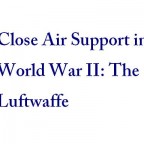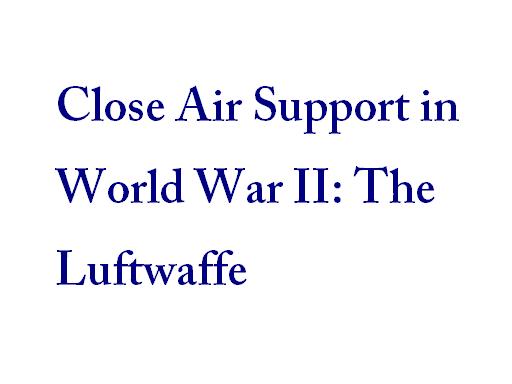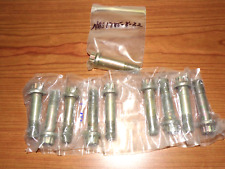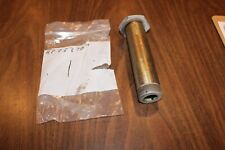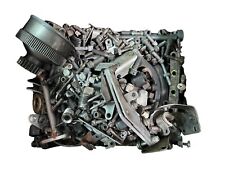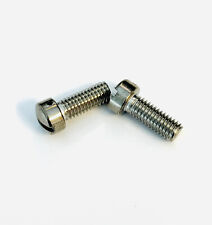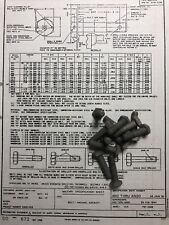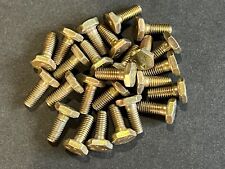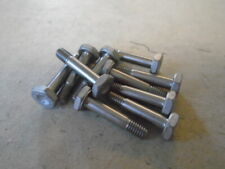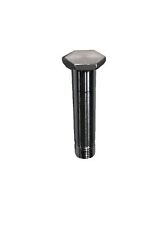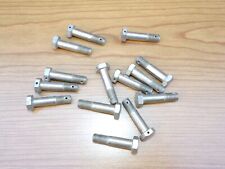Appendix: The Tools of the Trade: Aircraft and Weapons
The Aircraft
Although virtually every airframe in the Luftwaffe was used in CAS roles at some point in the war, four models especially “pulled their weight.” Below are some basic statistics for each type.
Henschel Hs123
Stats for Hs123a-1:
Powerplant: One 880 hp BMW 132Dc Radial piston engine
Max Speed: 211 mph at 3,935 ft
Cruising Speed: 196 mph at 6,560 ft
Service Ceiling: 29,530 ft
Range: 531 miles
Armament: 2 x 7.92mm MG17 machine guns, plus up to 992 lb of bombsJunkers Ju-87 Stuka
Stats for Ju-87D-1:
Powerplant: One 1,400 hp Junkers Jumo 211J-1 inverted-vee piston engine
Max Speed: 255 mph at 12,600 ft
Cruising Speed: 199 mph at 16,700 ft
Service Ceiling: 23,915 ft
Range: 954 miles
Armament: 2 x 7.92mm MG17 machine guns in wings and twin 7.92mm machine guns in rear cockpit, plus maximum bombload of one 3,968 lb bomb under fuselage, or various loads underneath fuselage and wingsHenschel Hs129
Stats for Hs129B-1:
Powerplant: Two 700 hp Gnome-Rhone 14M radial piston engines
Max Speed: 253 mph at 12,565 ft
Service Ceiling: 29,525 ft
Range: 348 miles
Armament: 2 x 20mm MG151/20 cannon, 2 x 7.92mm MG17 machine guns, and one 30mm MK101 cannonFocke-Wulf FW-190F
Stats for FW-190D-9:
Powerplant: One 1,776 hp Junkers Jumo 213A-1 inverted-vee piston engine
Max Speed: 426 mph at 21,655 ft
Service Ceiling: 39,370 ft
Range: 519 miles
Armament: 2 x 13mm MG131 machine guns and 2 x 20mm MG151 cannon, plus 1,100 lb of bombs or rocketsThe Weapons
The Germans used a wide range of weapons throughout the war for CAS, ranging from basic dumb bombs to cluster submunitions and high-velocity cannon. As they did throughout the war in other areas, they also developed some technically-advanced-but-troubled experimental weapons. A brief summary.
Guns / Cannon
A large range of guns and cannon were carried in an even larger range of platforms throughout the war. Because of its use in the Ju-87G-1, below are some statistics for the 37mm anti-tank cannon. Also included are stats on the 30mm MK103 cannon, which was used for both air-to-air and air-to-ground roles in the FW-190.Ju-87G-1’s 37mm BK3.7 (Flak 18) anti-tank cannon
BG3.7 (Flak 18) 37mm Anti-Tank Cannon:
Weight of weapon: 272 kg (600 lb)
Length of weapon: 3626 mm (11 ft, 10.75 in)
Length of barrel: 2112 mm (6 ft, 11.75 in)
Muzzle Velocity: 795-860 m/sec (2610-2820 fps)
Rate of Fire: 140 rds/min
Effective Range: 2000m
Weight of round: 3.22 lb (AP-T, tungsten-carbide core), 3.12 lb (HE-T)MK103 30mm cannon:
Weight of weapon: 145 kg
Length of weapon: 2335 mm
Muzzle Velocity: 940 m/sec (HE/AP tracer)
Rate of Fire: 380 rds/min (HE/AP tracer)
Penetration: 110 mm armor plate at 300mBombs
A large array of bombs were used by the Luftwaffe. At the start of the war, the most common fragmentation bombs were the SD-10 (22 lbs.) and SD-50 (110 lbs.). As the war progressed, it became apparent that there was a need for an area-saturation fragmentation weapon, rather than the earlier models that more or less required an accurate drop. The SD-2 was procured and mass-produced, and at the start of the Russian campaign was in widespread use. Initially, the bomblets were hung individually on aircraft (the Bf-109 and Ju-87, for instance, could carry 96 of them), but time went on, a plywood dispenser container was created and used by many airframes. In the largest size used, these plywood containers could carry up to 248 of the SD-2 bomblets. A low-level profile was needed for accurate drops, which became increasingly difficult due to ground fire. Of more use on the front was the SD-1 bomblet, which at 2.2 lbs offered a larger spread for the same size dispenser. With the design of a popular new dispenser, the AB250, this bomb case could be more accurately dropped in more profiles and would release about 225 SD-1s.For attacking armor, however, both the SD-1 and 2 were ineffective. After discovering that conventional bombs often were ineffective at scoring hits on moving or dispersed armor, the Germans introduced the 8.8 lb SD-4HI cluster bomblet, which had a hollow charge warhead that could penetrate as much as five inches of armor. As many as 78 SD-4HIs were packed into 1,100 lb containers and were used heavily by Ju-87 Stukas, which had the means to accurately drop them in steep dives. Larger 550 lb hollow charge bombs were used against fortifications, and they allowed up to 10 ft of armor penetration against concrete fortifications.
General purpose bombs tended to be either the SC-10 (22 lb), SC-50 (110 lb), or SC-250 (550 lb), sometimes fitted with long spikes on their nose to attack raillines and roads. Some of the spiked bombs could be dropped from as low as 160 ft AGL and proved useful in that role.
Rockets / Experimental Weapons
Although the Germans ended up favoring the high-velocity cannon and cluster bomblets for CAS work later in the war, a wide number of trials were made with unguided rockets and experimental weapons, almost exclusively against the Russians. The primary testbed for most of these weapons was the FW-190 airframe, as it replaced the Stuka in service and was a more survivable platform on the Eastern Front. In addition to glider bombs and rocket torpedoes (mostly for anti-ship work), the FW-190 also could carry the Panzerblitz 2 anti-tank rockets, which were variations of the R4M rockets used against Allied bombers. These rockets were launched in salvos of six against enemy tanks. The earlier Panzerschreck project involved using three modified 88mm rockets, which was then updated with larger warheads and modified launch rails. Lastly, the anti-bomber 280mm Wfr.Gr. 28/32 rocket was also experimented with, with little success.The Luftwaffe also experimented with vertically-mounted weapons, designed to fire down onto the thin top armor of Soviet tanks. First attempted with the 30mm MK103 cannon, the experimentation reached its peak with the SG113 (pictured above), which was two 77mm cannons mounted vertically on each wing. A magnetic sensor on the bottom of the installation would detect a tank below, and all four would fire at once. To counter the recoil, counterweights were fired upwards at the same time. The system successfully passed evaluation, but never made it into combat.

